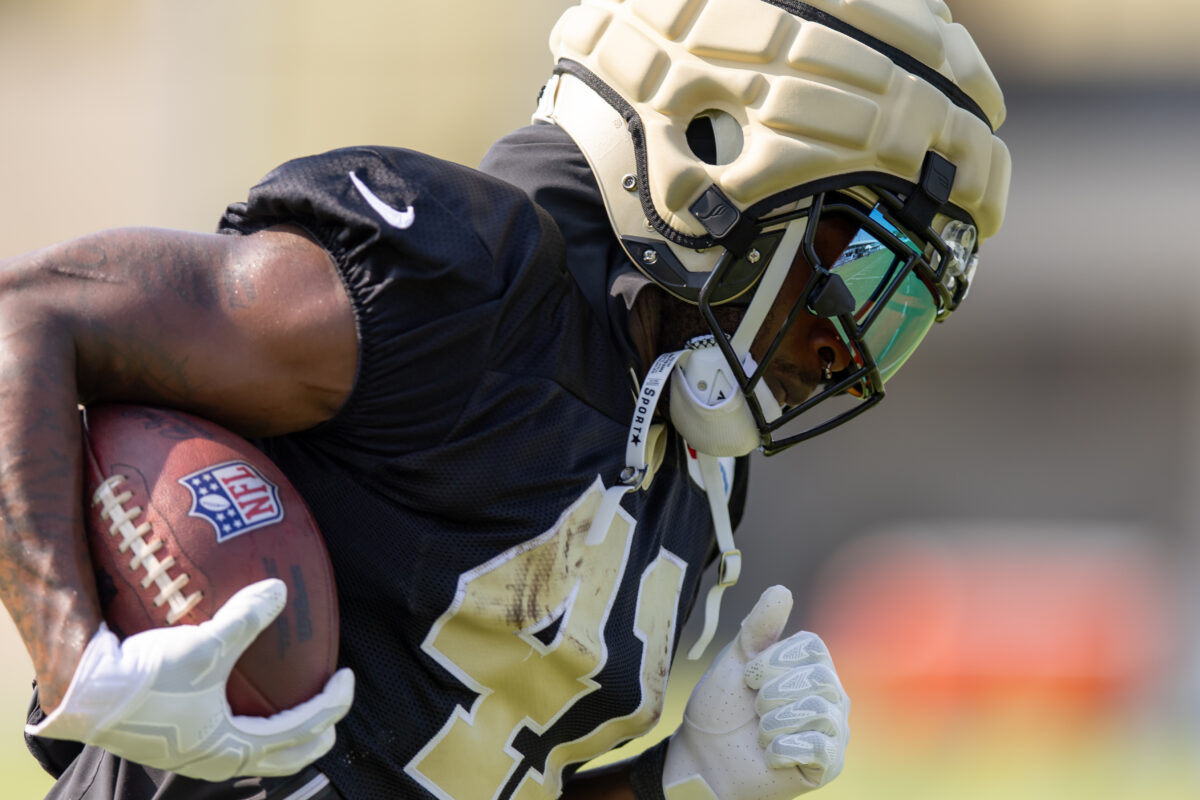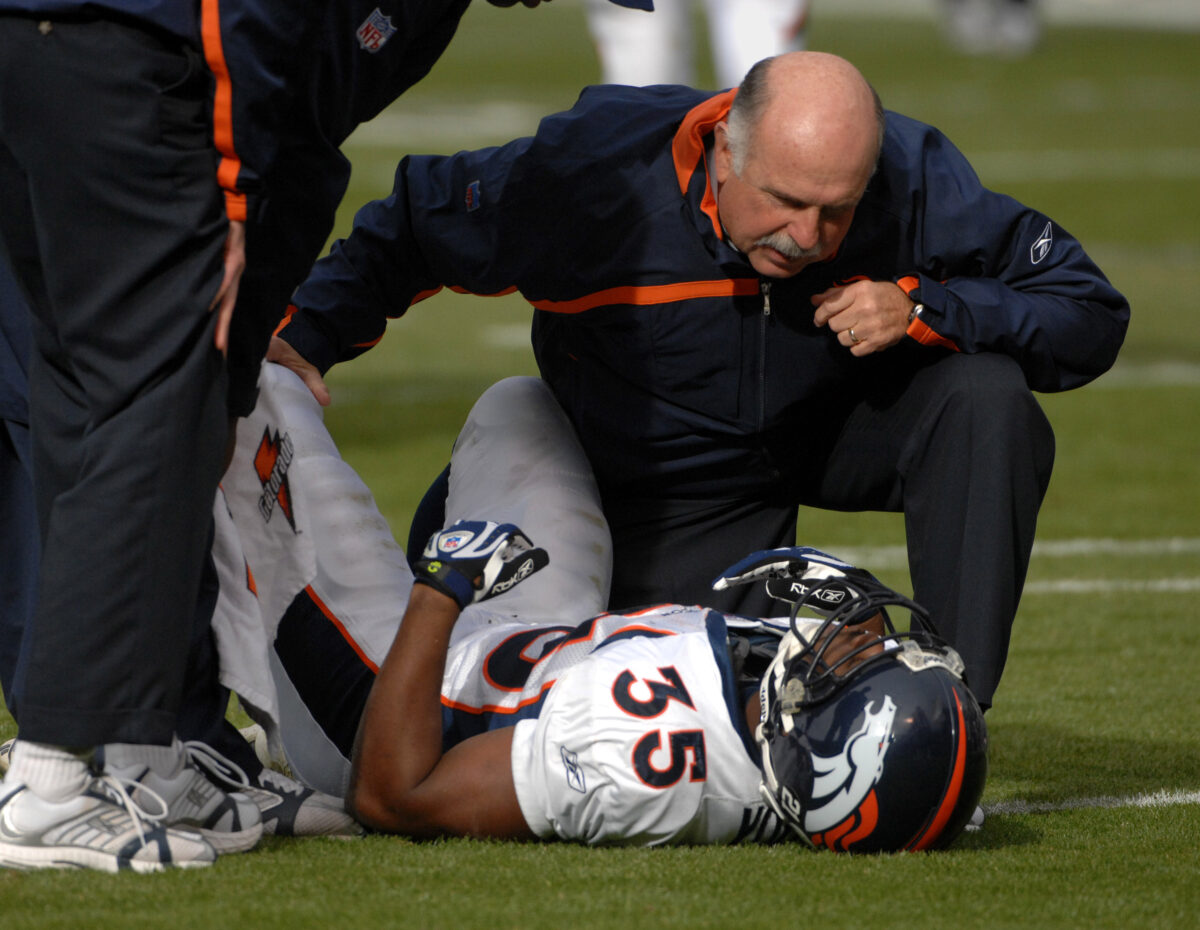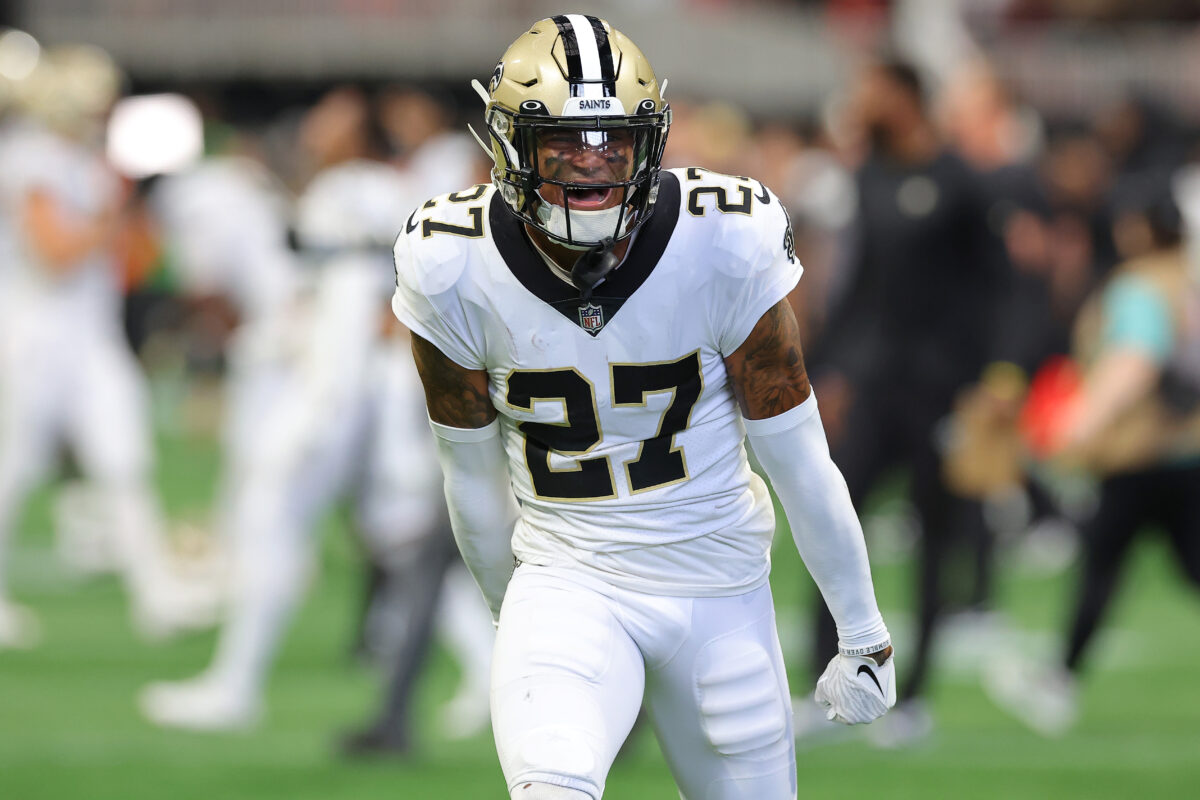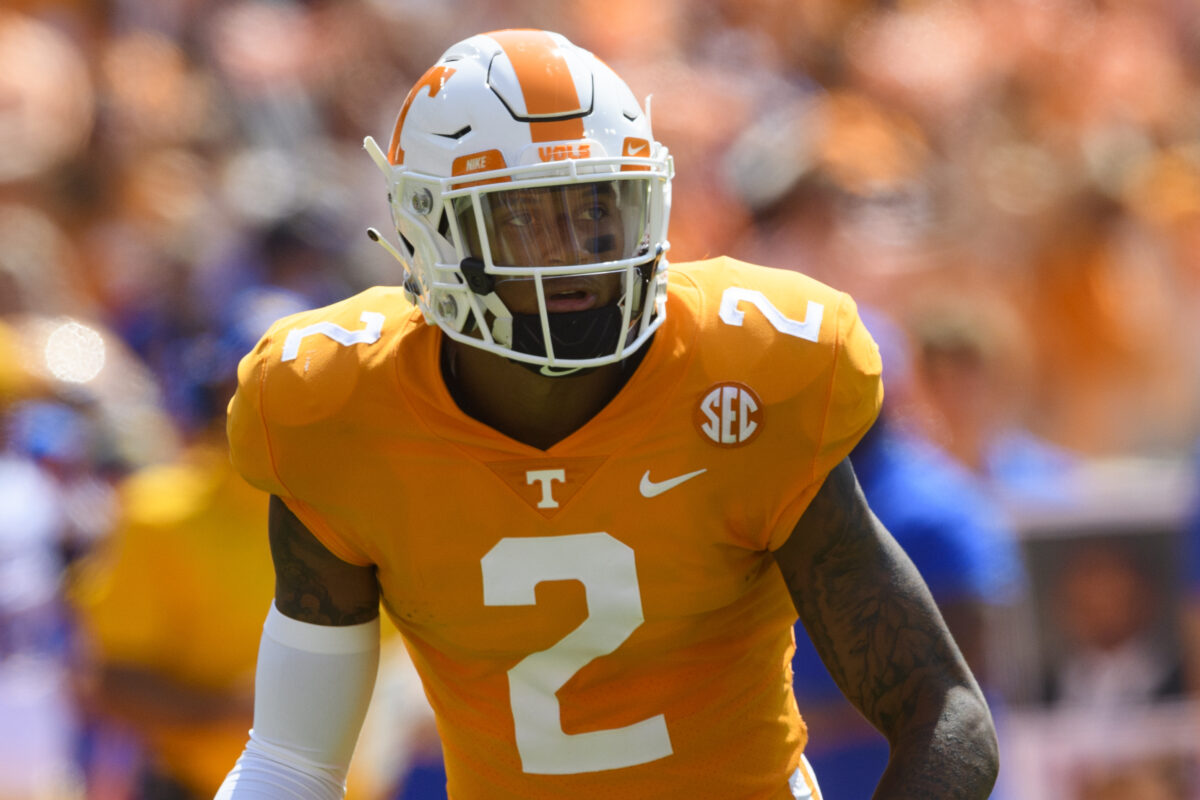[mm-video type=playlist id=01eqbyahgz6p2j3xp7 player_id=none image=https://saintswire.usatoday.com/wp-content/plugins/mm-video/images/playlist-icon.png]
Paulson Adebo went into the 2020 college football season with plenty of hype behind him: he’s an athletic prototype at 6-foot-1 and 198 pounds with ballhawk skills, but Adebo saw his stock plummet when he opted out amid the COVID-19 pandemic. But he stayed busy — in lieu of playing his final season at Stanford, Adebo flew home to Texas to train fastidiously with a familiar face: defensive backs specialist Clay Mack, a Dallas-based skills trainer who specializes in helping prospects transition to the NFL.
An industry leader who applies a scientific approach to training through functional movement, Mack has worked with multiple first-round draft picks including Jeff Okudah, Jamal Adams, Bryon Jones, and Marshon Lattimore. Past the refining of technique and body control, Mack works to instill perhaps the most important quality in a defensive back — a competitive mentality.
“If my passion is more than yours, we’re going to have a problem,” Mack told me. A former defensive back himself at Mississippi State, he turned to coaching after suffering a career-ending injury: “I’ve always been in leadership type roles. I think that breeds that alpha quality. That’s why I took it so hard once I got hurt, and those dreams kind of dissipated.”
An All-American at wide receiver his junior year of high school, Mack transitioned to cornerback his senior year – where he made All-American with seven interceptions. He also led his basketball team to its first ever state championship at point guard. Sound familiar?
Adebo and Mack are near-kindred spirits: the Saints rookie was a small forward on his varsity basketball team, member of the third fastest relay quartet in the 2017 Texas state championship, and starting wide receiver until his junior year of high school. They happen to be from the same suburb in Midlothian, Texas. Mack has known Adebo since high school.
“I knew his (defensive back) coach, Duane Akina, from when he was at University of Texas,” Mack noted. “That was a natural connection for me. Akina asked me about Adebo back when he was in recruitment, so I was one of the phone calls his coach made in regards to that.”
Mack continued: “I just knew watching him, if you look at his disposition and the whole nine, the way he’s built, he’s a natural defensive back in my opinion. He’s lengthy, has good size. Very explosive and calculated with his movements. When I come across multi-faceted athletes that play multiple sports, they’re typically skill players. But just watching (Adebo), his disposition, his demeanor – it just had defensive back written all over for me.”
His approach to training is two-pronged: fundamentals and mentality. Mack finds with certain players, he needs to infuse a “pro dog mentality” he considers paramount to skillset. Marshon Lattimore didn’t need it. This may come as a shock, but neither did C.J. Gardner-Johnson, another former client and one of Adebo’s new teammates. The aspect of mental toughness is critical to Mack’s evaluation of defensive backs.
“I don’t care how athletic you are, how fundamentally sound or skillful you are, someone’s going to catch a ball,” Mack said. “You’re going to get beat deep, you’re going to get beat for a touchdown and on some critical plays. It’s not about how you get beat, but when you get beat, and how you bounce back from that.”
Mack continued: “The higher the level, the better the quarterback, receivers, offensive line – the execution of schemes from an offensive perspective is going to get better. Guys are going to beat you, it is what it is, right? Are you going to go in the tank? Pout? You have to have selective memory and line up for the next play.”
Aspects of mentality and toughness interplay when it comes to a player’s ability to tackle. “The thing about tackling is it’s a want, not a skill,” Mack told me. “It’s not necessarily a skill, although there are some skill elements on the way you approach and angle tackles. At the end of the day, you need somebody to want to tackle. You have to want to go in and execute that technique to make a tackle.”
In confirming Adebo possesses these traits, it made the drop in his draft stock that much more mystifying. In a pre-draft interview, Adebo mentioned how he was trying to answer those questions for things he needed to work on, and thought he had done so through his training with Mack. I asked Mack to detail their work this offseason and what question marks and deficiencies they improved upon.
“We talked about a game plan, in regards to his stock and where it was even a year before, because he contemplated coming out the prior season. We need to find out why your stock dropped or why people failed to warm on you. I don’t like to just be doing things just to be doing them. We had plenty of time because he opted out, so we needed to diagnose those problems, attack and fix it.”
Mack continued: “I talked to his agent and gathered as much information I could. From there, we slowly started to detox some ways and habits, and intoxicate him with some I don’t see or that need to be fixed. We worked a lot on his bend because he’s so long, just being efficient in his movements. We made sure he understood how efficient he should be based on his natural biomechanics.”
“That was pretty much it. To be honest, once you dig into the biomechanics, movement efficiency, understanding the kinetics, just the science behind movement. To talk about it is one thing, but to apply it is a whole different ballgame. We walked through our first session – one thing I always tell my guys is if you want to know how to move, you need to walk your movements first. Your body tends to not let you be unorthodox when you just walk. From there, we jog it, and then we’ll run it.”
Mack analyzes each progression to pinpoint within which stage movements start to look different than walking pace. That’s the stage he starts with. With Adebo, they went from a trot to a jog, ran through to see what it looked like, and went through the film to diagnose. Mack noted where he would lean in and subsequently be off balance; they’d start again at walking pace and correct it until he mastered every step of the process.
Quite literally the old adage, walk before you can run. And Adebo’s up to running speed. The last area they worked on is a bit curious: ball skills. It’s not about the catch abilities of the former wide receiver – it all comes back to functionality and efficiency of movements. Specifically, this improved Adebo’s aggressive pass deflections into interceptions.
“He has the ball skills, but the thing about turning those deflections into interceptions is, what is the proximity?” Mack explained. “How close are you to your guy when the receiver catches the ball? We worked on this in regards to his efficiency coming out of breaks. You can have a good instinctive break, but your breaking pattern in your feet is off. If you break with your left but the right foot came right back down, you basically took two steps in the same spot. That means you’re not moving.”
Mack trained Adebo to eliminate this step and refine his ability to make positive breaks; closing that extra yard can be the difference-maker, and it’s all within a player’s first step. Once the fundamentals were instilled, his natural ball skills and receiver nature took over – highlighting his 10” hands. His analysis of Adebo’s trajectory was quite encouraging for Saints fan hopefuls.
“I think a lot of people are going to be shocked by how he gets in and out of breaks, how he mirrors guys,” Mack said. “I think they’ll be pleasantly surprised. He has great feet, great hips. One of the only things that holds a lot of guys back early on in their careers is understanding the NFL schemes. The fundamentals are there. The sooner [Adebo] learns the scheme, the sooner he’ll be able to display some of those attributes that allowed him to get drafted.”
Deemed sole occupant of “Adebo Island,” Paulson Adebo matches his dog mentality with Cool Hand Luke demeanor. It’s what allowed him to eliminate the periphery noise of the tumultuous 2020 season, and hone in on the necessary work to provide answers to those question marks. Several still remain, but not in terms of promise. Should Adebo quickly learn the schemes – which his Stanford background should reinforce – he possess the potential to become a true lockdown corner with the ball skills of an elite receiver. But for now, he’s got to learn to walk in New Orleans before he can take off and run.
[listicle id=45587]






